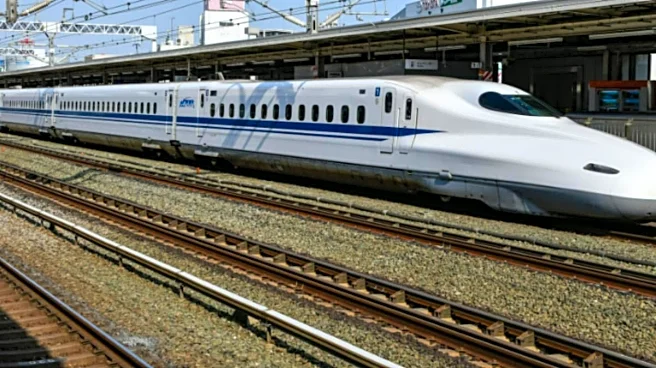A major transport breakthrough could soon transform travel between Andhra Pradesh and Telangana. The Centre has reportedly given an in-principle nod for a semi-high-speed bullet-style rail corridor connecting Visakhapatnam, Vijayawada, and Hyderabad, designed to run trains at speeds of up to 220 kmph.
This would drastically reduce travel time between Visakhapatnam and Hyderabad from the current 11-12 hours by train to just 4-5 hours, marking one of the fastest intercity rail links in South India.
What Is Being Planned?
According to the initial proposal, two semi-high-speed corridors, covering a total of 942 km, will be developed:
- Visakhapatnam – Vijayawada – Shamshabad (Hyderabad Airport)
- Visakhapatnam – Vijayawada – Kurnool Town
These routes are planned to support upgraded Vande Bharat-type trains capable of running at 200-220 kmph, compared to the
current limit of 110-130 kmph on conventional tracks. Importantly, the Shamshabad connection means passengers could directly reach Hyderabad International Airport from Visakhapatnam without entering the city first.
Where Does The Project Stand?
- The Railway Board has completed the Preliminary Engineering and Traffic Survey (PETS) for the project.
- A Detailed Project Report (DPR) has reportedly been prepared and submitted.
- Once approved, land acquisition and alignment planning will begin.
- The estimated cost of the survey was around Rs 2.70 crore.
Why This Matters
Currently, even the fastest trains between Visakhapatnam and Hyderabad, like Vande Bharat, take between 10 and 12 hours due to track limitations. Even though Vande Bharat trains can run up to 160 kmph, they operate at lower speeds due to older tracks and congestion.
With new dedicated semi-high-speed corridors, trains will be able to run at their optimal speeds, making long-distance intra-state and inter-state travel faster, safer, and more efficient.
What Will Change For Andhra Pradesh And Telangana?
The project is expected to boost:
Business & Logistics: Faster connectivity between Visakhapatnam Port, Vijayawada’s trade hubs, and Hyderabad’s IT and pharmaceutical clusters.
Tourism: Easier access to Araku Valley, Vizag beaches, Srisailam, Nagarjuna Sagar, Amaravati, and Kurnool’s heritage sites.
Employment & Urban Growth: Reduced travel time could encourage job commuting and multi-city living.
Officials believe Visakhapatnam could emerge as a multi-modal transport hub, connecting ports, airports, and now high-speed rail.
A Step Closer To India’s High-Speed Future
India’s existing Vande Bharat trains are already redefining passenger experience, but are still limited by track speeds. The proposed semi-high-speed corridors, along with future upgrades, will gradually prepare the country for full bullet-train functionality, similar to Japan and Europe.
If cleared for execution, the Visakhapatnam, Hyderabad corridor may become one of the most impactful infrastructure shifts in South India, cutting travel time, boosting regional economies, and changing how people move between coastal and inland cities.



/images/ppid_59c68470-image-176414755675383546.webp)
/images/ppid_59c68470-image-176414004843828881.webp)




/images/ppid_59c68470-image-176425015790245644.webp)


/images/ppid_a911dc6a-image-176432622911748592.webp)

/images/ppid_59c68470-image-176432503184312941.webp)

/images/ppid_59c68470-image-176414254400929633.webp)